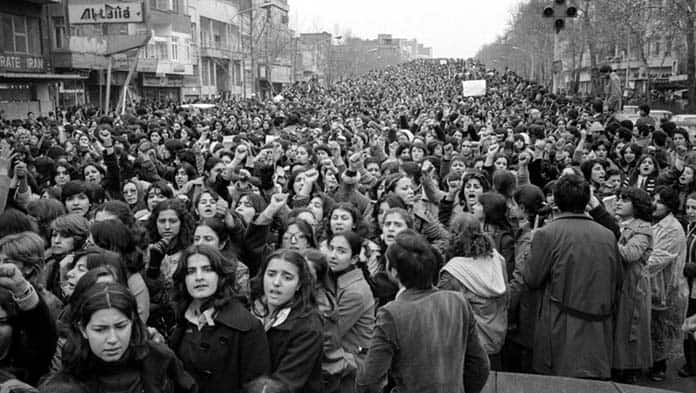For most commentators, the dictatorial rule of the Muslim clergy in Iran today is a direct and inevitable consequence of the revolution that overthrew the Shah in 1979.
But the mass movement that brought down the royal regime also contained the potential for a radically different outcome—one based on the power of workers.
Today, as workers join the struggles on the streets in Iran, there is inspiration to be gained and lessons learned from the events of 1979.
Iran has long been strategically important for the West, especially because of its enormous reserves of oil. So when Prime Minister Mohammad Mossadegh moved to nationalise the hugely profitable Anglo-Iranian Oil Company in 1953, the West backed a coup that saw him replaced with the Shah.
The new regime unleashed savage repression on the left, jailing and torturing some 20,000 political prisoners. This opened a space for political Islam to emerge as a significant opposition force.
In 1975, a drop in oil revenues led to crisis. Between October 1977 and September 1978, anti-Shah protests grew from weekly to daily events. Two million people demonstrated in Tehran on 7 September 1978.
A strike movement gathered momentum. When the Shah imposed martial law and his troops massacred more than 2000 protesters, the oil workers struck. This proved decisive. Turning off the tap on oil profits broke the regime and in February 1979 the Shah fled.
The revolution became a festival of the oppressed. Public meetings took place in the streets, universities and workplaces covering politics, religion, philosophy and art.
Oppressed groups such as women and national minorities took centre stage and demanded equal rights. Peasants seized the land.
Workers’ power
Most importantly, workers took over factories, offices, hospitals and universities nationwide and decided to purge the old management and run them themselves.
To do this, they elected workers’ councils, known as shoras. The strike committee in the Abadan refinery, for example, invited all workers to general assemblies to elect representatives.
The shoras united blue and white-collar workers irrespective of trade, skill or gender.
Workers began to raise demands for higher wages, better and cheaper housing, retirement benefits, participation in management and the purge of former managers.
The shoras played the same role as soviets in the Russian revolutions of 1905 and 1917, or the cordones in the revolutionary upheaval in Chile in 1973. Starting with immediate economic questions, they began to grow in confidence and challenge the state for control.
As Time magazine reported from the Abadan refinery in April 1979: “Convinced that they were the dominant force in ousting the Shah, the oil workers … are insisting on 50 to 100 per cent wage increases and are threatening to walk out if they do not get them.”
But instead of the shoras challenging the state for power, posing the possibility of workers’ power and a socialist solution to the social and political crisis, the moment passed.
Many workers saw the new regime under the leadership of Ayatollah Khomeini as their friend. As one group put it: “The day after the revolution under the leadership of Imam Khomeini we will officially take over the control over the factories.”
In reality, Khomeini regarded the workers’ movement as a threat. Just three days after the insurrection, he ordered all strikers back to work.
Within a month the government threatened workers: “Any disobedience from and sabotage of the implementation of the plans of the Provisional Government will be regarded as opposition against the genuine Islamic Revolution.”
Khomeini didn’t get his way immediately. But in early 1982, the shoras were outlawed.
The Left’s mistakes
The political weakness of the movement flowed from the politics of the Iranian left. A variety of Stalinist forces jostled for influence, but despite their differences they all agreed that the main fight was against the Shah and US imperialism, and that workers were not yet ready to challenge for power.
When Khomeini’s supporters invaded the US embassy in Tehran in November 1979 and held US officials hostage for 444 days, most of the left fell in behind the regime.
Khomeini repaid them with repression. In 1980 he set about purging the left from the universities. By 1983 the two biggest left groups were banned and thousands of their supporters executed.
Workers and students in Iran today can rightly be inspired by the courage of the 1979 generation.
But to ensure their struggle is not sidelined in the same way, they need to build revolutionary organisation that is clear on the power of the working class not just to overthrow the dictatorship but to open the way for socialist transformation.
By David Glanz






